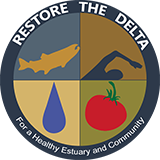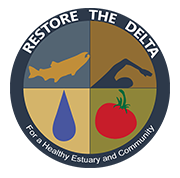California will draw many lessons from last week’s massively destructive earthquake and tsunami in Japan, which led to states of emergency in four California coastal counties and even an emergency watch on the Delta’s Staten Island.
One lesson is that the State cannot ignore emergency response services in the Delta region in its ongoing efforts to adjust California’s water delivery systems.
This point was made repeatedly by panelists addressing the Delta Stewardship Council last Friday on the subject of reducing risks to people, property, and state interests in the Delta. The point was made most vigorously by Ron Baldwin, director of San Joaquin County’s Office of Emergency Services. He called for risk maps, a scripted plan empowering local responders, and an end to arguments about who is going to pay for emergency response.
Baldwin urged the DSC not to jump directly to earthquake risk instead of first addressing non-seismic levee failures and flood events that have a higher probability of occurring. And Delta Protection Commission Executive Director Mike Machado agreed that we should not let the threat of big events drive public safety.
Another lesson we might take from the disaster in Japan is the folly of relying on large-scale and long-distance infrastructure to store and deliver water.
In response to a question from Councilmember Johnston, panelist Dr. Raymond Seed told the DSC that conditions below the Delta are ideal for a tunnel or tube that could survive an earthquake. But the Council has heard in earlier briefings about the blind thrust faults throughout the Bay Area and along the east side of the Coast Range, where transfer infrastructure carries water to other parts of the state. What will we gain moving water under the Delta if surface transfer infrastructure is damaged?
When we move water over great distances and rely on electric power to pump it over and through mountains, we create countless risks of disruption in the event of any earthquake or flood. Even Panelist Richard Roos-Collins, who supports conveyance, noted that conveyance itself is a risk management strategy and called for more local contingency supplies like those developed by MWD.
John Cain of American Rivers and other panelists raised the issue of reducing risks by integrating restoration of flood plains valley-wide into overall planning. And several cautioned against using levee certification to justify increased building in flood-prone areas.

